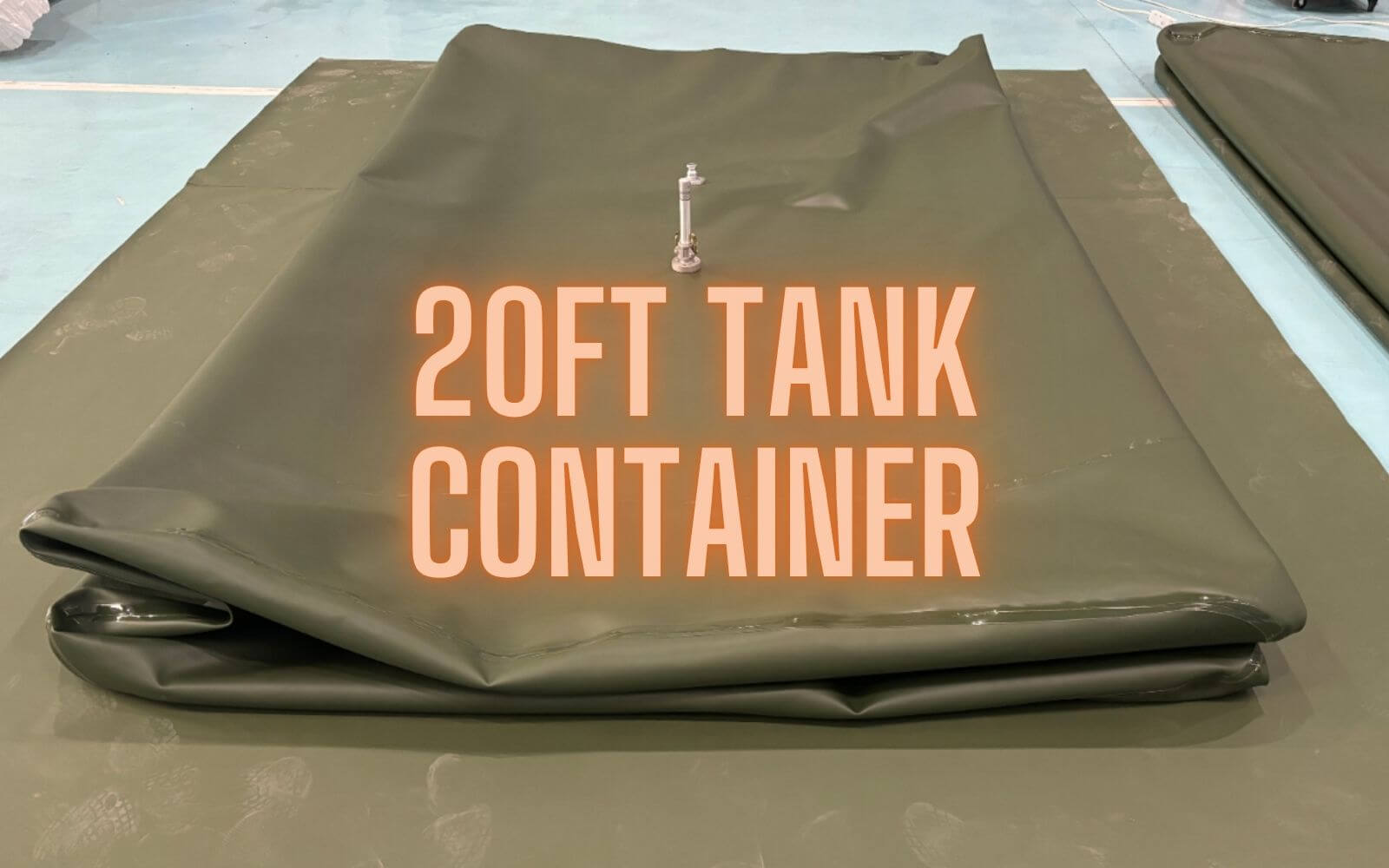20FT TANK CONTAINER
The safe transport and storage of water, chemicals, fuels, and other industrial liquids require reliable, compliant, and easy-to-maintain solutions. Among the most popular options are 20ft tank containers, particularly flexible tank containers, which offer unique advantages over traditional rigid tanks.
In this guide, we’ll cover:
What a flexible 20ft tank container is and how it works
Key advantages over rigid ISO tank containers
Industries and applications that benefit from these tanks
Compatible liquids (water, fuels, acids, and solvents)
Step-by-step cleaning & safety procedures
Whether you’re in chemical manufacturing, fuel logistics, or bulk liquid transport, the flexible tanks can work in water, fuel, chemila liquid storage and transportation, this guide will help you optimize safety and efficiency.
What Is a Flexible 20ft Tank Container?
A flexible 20ft tank container is a collapsible, heavy-duty bladder designed to fit inside a standard 20ft ISO container frame. Unlike rigid steel or stainless steel tanks, these bladders are made from multi-layered, chemical-resistant materials such as:
Polyester TPU (Thermoplastic Polyurethane)
For fuels which is compatible to various fuels, including gasoline, diesel, JP-08, kerosene, oil, etc.
Food-grade TPU
For drinking water storage, which meets the FDA certificate.
PVC coatings
Foragressive chemical and other non-drinking water liquids, which is a economic choice short-time liquid storage and transportation.
How It Works
The empty flexitank places into a 20ft shipping container.
The tank can be filled via industrial-grade valves (top or bottom connections).
After storage and transport, the bladder can reuse after drained, cleaned and dried.
Advantages of Flexible 20ft Tank Containers
| Feature | Flexible Tank | Rigid Tank |
| Weight | ✅ Lighter (no steel structure) | ❌ Heavy (steel increases shipping costs) |
| Cost | ✅ Lower upfront & operational cost | ❌ Higher initial investment |
| Cleaning | ✅ Easier (no residue traps) | ❌ Requires intensive cleaning |
| Storage (Empty) | ✅ Folds compactly | ❌ Takes up full container space |
Key Benefits
✔ Easy storage and transportation(empty tank can compact and store into small carton)
✔ Low labor costs involved (no need the hevy machines).
✔ Faster turnaround (quickily deployment and remove).
Applications of 20ft Tank Containers
1. Chemical Transport
Acids & Solvents (sulfuric acid, hydrochloric acid, acetone).
Industrial Liquids (fertilizers, latex, liquid polymers).
2. Fuel & Oil Logistics
Diesel, gasoline, aircraft fuels, biodiesel, and lubricants.
Edible oils (palm oil, sunflower oil).
3. Food & Beverage Industry
Non-hazardous liquids (fruit juices, syrups, liquid sweeteners).
Pharmaceutical-grade water.
4. Emergency & Military Use
Rapid deployment of fuel or potable water in disaster zones.
Mobile refueling stations for defense operations.
Compatible Liquids for 20ft Tank Containers
| Liquid Type | Recommended Tank Material | Special Requirements |
| Water (Potable) | Food-grade TPU | FDA certifications |
| Diesel & Biodiesel | TPU or coated PVC | Static-safe, UV-resistant |
| Acids (Sulfuric, HCl) | Chemical-grade TPU | Acid-resistant liners |
| Solvents (Acetone, Methanol) | Multi-layer TPU | Vapor-proof valves |
| Edible Oils | FDA-approved TPU | Oxygen barrier layers |
⚠ Important: Always check chemical compatibility charts before loading.
Cleaning Procedures for 20ft Tank Containers
1. Pre-Cleaning Inspection
Check for residues, odors, or damage from the previous load.
Ensure valves and seals are intact.
2. Cleaning Steps (For Reusable Flexitanks)
Drain completely – Remove all liquid residues.
Rinse with water – Use high-pressure jets if needed.
Chemical wash (if required):
For oils/fuels: alkaline detergent.
For acids: neutralizing agents (baking soda solution).
Final rinse – Ensure no cleaning agents remain.
Dry thoroughly – Prevent microbial growth.
Finding the cleaning way in here.
3. Post-Cleaning Validation
Third-party certification may be required for food-grade liquids. Besides the food-grade liquids, the fuel storage and unharmful chemical liquids, the flexible bladders can use till the tank is heavily damaged.
Documentation marked on the bladder should include cleaning date, method, and valid time.
Safety Guidelines for Chemical Tank Containers
1. Loading & Unloading Best Practices
Grounding – Prevent the shape stuff to stab the bladder.
Ventilation – Avoid over-filled to breaking the tank.
Spill containment – Use drip trays and absorbents.
2. Transport Compliance
Proper labeling (UN number, hazard class).
3. Emergency Response
Leak kits on-site for chemical spills.
Training for handlers for emergency happened.
When to Choose Flexible vs. Rigid 20ft Tank Containers?
Flexible Tanks Are Best For:
One-way shipments, which is not meant the bladder is one-time use, it means the container can use for liquid storage by using the flexible bladder, but when removing the bladder, the container can apply for different purposes.
Cost-sensitive operations, using flexible bladder is a cost-effective choice, not only the bladder cost is half of the steel tank, also the shipment cost and labor cost can save a lot.
Multi-purpose liquids available, there have various optinal materials of flexible bladder for 20ft contaner tank, for drinking water, the FDA meets TPU materials can work; for fuels storage, polyester TPU is compatible for various fuels; and for chemical storage, the durable PVC is suitable.
Rigid Tanks Are Best For:
High-pressure or extreme-temperature liquids.
Permenant varied chemical liquids.
Hazardous materials requiring UN-certified containers.
Final Thoughts
20ft flexible tank containers provide a safe, efficient, and cost-effective way to transport and store chemicals, fuels, and food-grade liquids. By following proper cleaning protocols and safety measures, companies can minimize risks and maximize operational efficiency.








